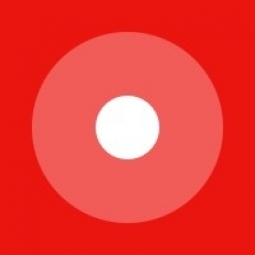技术
- 分析与建模 - 机器学习
- 传感器 - 激光雷达/激光扫描仪
适用行业
- 城市与自治市
- 零售
适用功能
- 物流运输
用例
- 智慧城市运营
- 智能照明
关于客户
本案例研究的客户是公众,特别是居住在城市地区的公众。不平等地图集是任何有兴趣了解城市社会隔离动态的人都可以使用的工具。对于有兴趣解决不平等和种族隔离问题的城市规划者、政策制定者和社会科学家来说,它特别有用。企业还可以使用该工具来了解其经营区域的人口统计数据,并就在哪里开设新地点做出明智的决定。
挑战
挑战围绕着理解城市中的社会隔离,特别是在美国。对隔离的传统理解是基于地理位置,通常表现为邻近的富裕地区和贫困地区之间的鲜明对比。然而,这种观点没有考虑隔离背后的“原因”,而只关注“地点”。我们面临的挑战是通过使用高频位置数据来了解隔离背后的原因,从而挑战这种传统的隔离概念。从美国 11 个人口最稠密的大都市区收集的数据显示,平均而言,我们每天接触的人中约有 75% 居住在 15 公里以外的地方。这表明,要理解种族隔离,我们需要超越地理位置并开始考虑其背后的原因。
解决方案
这一挑战的解决方案是开发了不平等地图集,这是一种在线工具,可以绘制城市中 120 万个兴趣点,例如餐馆、大学等。每个点都根据该地方的不平等程度进行着色,这是确定的访问该地点的人们的收入分配有多不平衡。 《不平等地图集》提供了对种族隔离更细致的理解,表明种族隔离不仅与人们居住的地方有关,还与他们访问的地方和所做的选择有关。例如,人们喜欢的食物类型会影响他们所经历的种族隔离,其中拉丁美洲和快餐店的种族隔离最为严重。该地图集还显示,开设一家企业可能会影响一个地区的不平等。例如,波士顿保德信中心 (Prudential Center) 的 Eataly 餐厅的开业,使该地区的总体隔离程度减少了 10%。
运营影响
数量效益

Case Study missing?
Start adding your own!
Register with your work email and create a new case study profile for your business.
相关案例.

Case Study
Turning A Stadium Into A Smart Building
Honeywell created what it called the “intelligent system” for the National Stadium in Beijing, China, turning the venue for the opening and closing events at the 2008 Summer Olympics into a “smart building.” Designed by highly controversial artist Ai Weiwei, the “Bird’s Nest” remains one of the most impressive feats of stadium architecture in the world. The 250,000 square meter structure housed more than 100,000 athletes and spectators at a time. To accommodate such capacity, China turned to Honeywell’s EBI Integrated Building Management System to create an integrated “intelligent system” for improved building security, safety and energy efficiency.
.png)
Case Study
Smart Street Light Network (Copenhagen)
Key stakeholders are taking a comprehensive approach to rethinking smart city innovation. City leaders have collaborated through partnerships involving government, research institutions and solution providers. The Copenhagen Solutions Lab is one of the leading organizations at the forefront of this movement. By bringing together manufacturers with municipal buyers, the Copenhagen Solutions Lab has catalyzed the development and deployment of next-generation smart city innovations. Copenhagen is leveraging this unique approach to accelerate the implementation of smart city solutions. One of the primary focus areas is LED street lighting.

Case Study
Buoy Status Monitoring with LoRa
The Netherlands are well-known for their inland waterways, canals, sluices and of course port activities. The Dutch Ministry of Infrastructure indicates that there are thousands of buoys and fixed items in and near water environments that would profit from IoT monitoring. One of the problems with buoys for example, is that they get hit by ships and the anchor cable breaks. Without connectivity, it takes quite some time to find out that something has happened with that buoy. Not to mention the costs of renting a boat to go to the buoy to fix it. Another important issue, is that there is no real-time monitoring of the buoys at this moment. Only by physically visiting the object on the water, one gains insight in its status.

Case Study
Barcelona Case Study
Barcelona’s heavy traffic and its associated high levels of pollution were the primary factors that motivated some companies and universities to work on strategies for improving traffic in the city centre. Bitcarrier is one of the technologies involved in the In4Mo Project, whose main objective is to develop the applications that form the core of smart mobility, one of the fundamental pillars of the smart city concept.

Case Study
China Mobile Smart Parking
Smart Parking, powered by NB-IoT technology, is making it easier for drivers to find free parking spots. Cities can better manage their parking assets and maximize the revenue available to them as a result. Drivers searching for parking create congestion and pollution by circling and hunting for available parking. Smart Parking services are able to significantly ease these problems by guiding a driver directly to a parking space.








